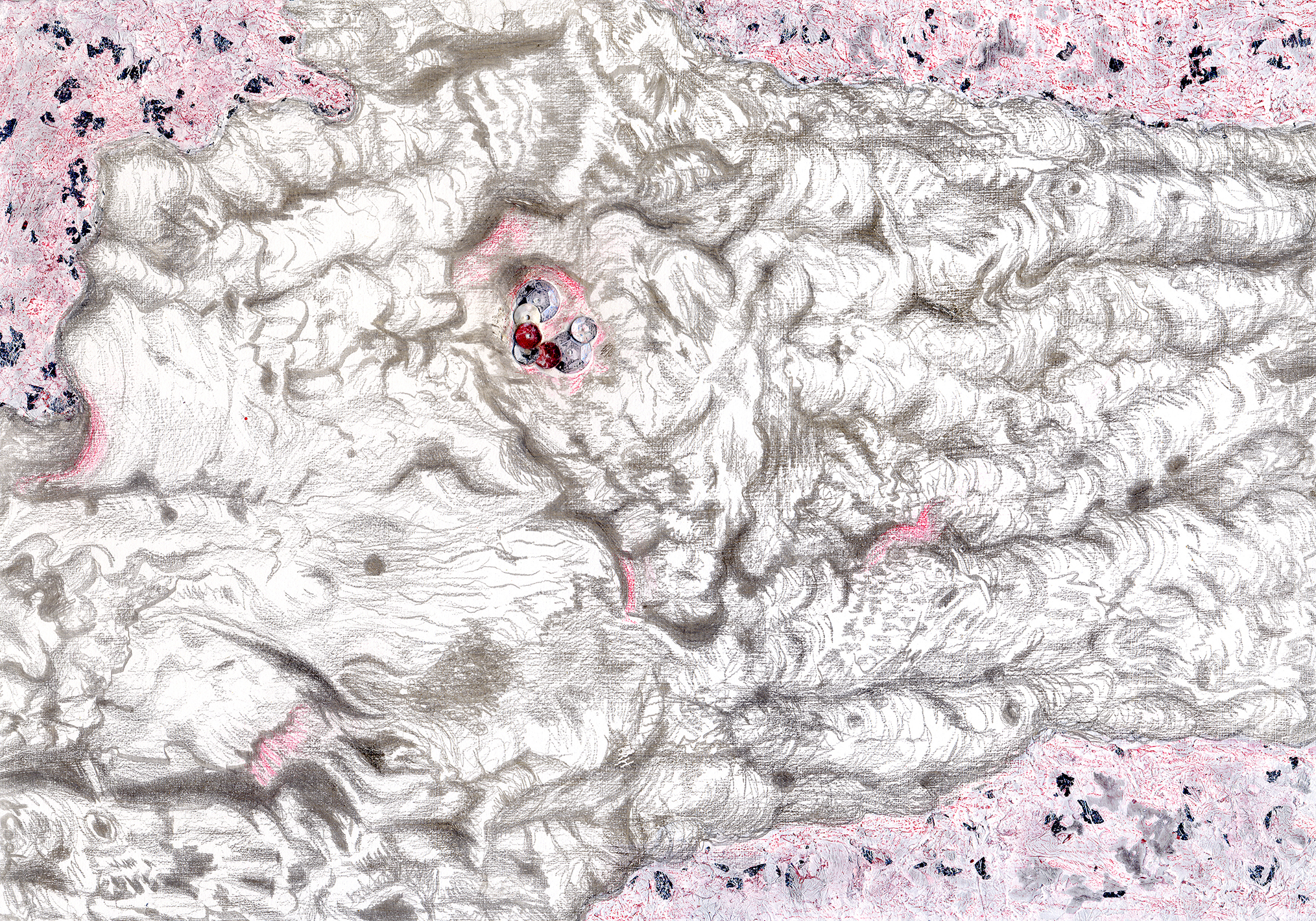In my previous post about William Herschel, I mentioned that his ability to scan the night sky was helped by his knowledge and familiarity with music and more especially with sight-reading. Underpinning both skills was the honed ability to recognise patterns, and thus note any difference in those patterns, especially in the stellar nebulae.
In the same way, patterns are frequently a very important part of art-making. Nature is full of such examples, from alto-cirrus clouds to ripples on the water, from a millipede's many footprints in the sand to the distinctive feathering on a bird that flashes from tree to tree.

Tree bark offers a magical multitude of patterns, each distinctive to the tree species. The silverpoint, watercolour and sequins I used to depict The Life Within seemed appropriate for the live oak bark I picked up on a walk one day. Shaped by wind and rain, sun and shade, the tree's bark is a wonderful indication of the energy and resilience of that tree.
The Life Within, silverpoint, watercolour, sequins, Jeannine Cook artist
A walk along any beach yields countless examples of nature's patterns in shells. This silverpoint I did of an Angel Wing came from Sapelo Island. Its patterns show how nature reinforces the delicate shell to withstand the sea's relentless tossing and pounding. For an artist, it is endless fascination and a considerable challenge to draw!
Angel Wing shell, silverpoint, Jeannine Cook artist
Patterns play a huge role in many approaches to art. One type of work that I have always found powerful is Australian aboriginal art , in which their visual and Dreaming worlds are united. Patterns reach an apogee of complexity, beauty and subtlety in these paintings. . Dots, dashes, stripes - they become the ultimate collection of patterns, even though they are in truth symbols of their sacred Dreaming world. This is especially the case with the art produced from 1972 onwards in the North West Territory at Papunya, when the tribal elders began to paint on Masonite and later canvas, rather than on rock faces and sand, as they had done for the last 20,000 years.
MAWALAN MARIKA, Sydney from the Air, 1963, National Museum of Australia.
Another version of patterns in art was sent to me the other day by a fellow silverpoint
and graphite artist, Cynthia Lin, . It was the announcement of a current collective exhibition, Observant, at New York's ISE Cultural Foundation, in which her large-scale graphite drawings of skin are featured. This is one of her works, entitled Crop3 DSnosemouth (detail), 2008, graphite on paper, 66 x 71".
Whether realistic or abstracted, patterns are the underpinnings of most art. It is fun to observe nature's patterns and even more fun to incorporate them in art.


